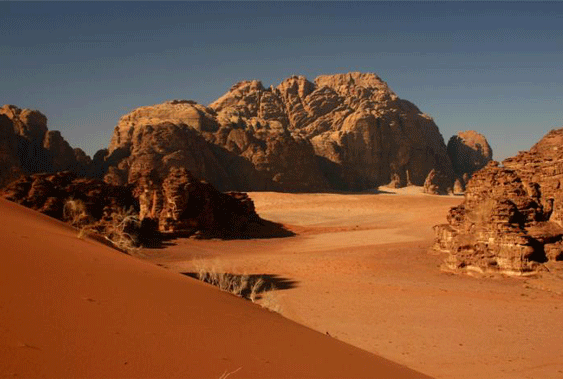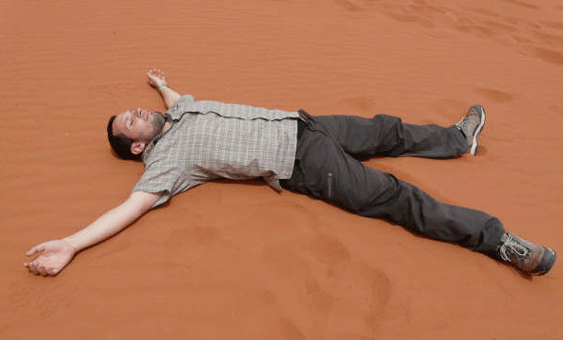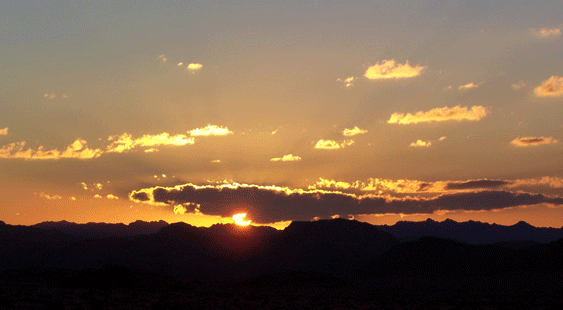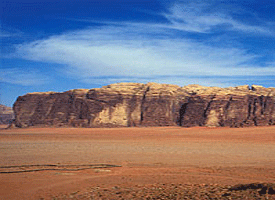| |
|
|
 |
 |
|
|
|
|
|
Wadi RUM
& History |
|
|
The desert
The desert and the act of moving through it, is a
wonderful experience for cleaning the mind of all
the daily thoughts and worries. The desert and its
dunes stretch for miles and miles. Life settles into
a timeless routine of local tea and fresh bread,
walking, a lunch stop for fresh salad and a siesta.
Then a few more miles before the evening meal, a
roaring fire, singing and a night under the stars as
you have never seen before.
We move at the same gentle, effortless pace as our
camel train, either riding the Bedouins camels or
enjoying the hot sand or bare feet. The Bedouins
learned how to live with this beautiful yet savage
area thousands of years ago and are completely at
one with the endless sands of the desert .
in this place your profound desires are launched and
your dream fantasies come to life. Since ancient
times, the desert has been deep in our thoughts. In
the dreams of all human beings, |
|
|
 |
|
|
|
|
|
|
|
 |
|
|
|
|
|
|
|
 |
|
|
|
|
|
|
|
|
A journey to Wadi Rum is
a journey to another world . A vast, silent place,
timeless and starkly beautiful.. Wadi Rum is one of
Jordan's main tourist attractions ,being the most
stunning desert cap ,in the World, lying 320 km
southwest of Amman , 120 km south of PETRA , and
only 68 km north of agaba, Wadi Rum is a protected
area covering 720 square kilometers of dramatic
desert wilderness in the south of Jordan. Huge
mountains of sandstone and granite emerge,
sheer-sided, from wide sandy |
|
 |
|
|
|
|
valleys to reach heights
of 1700 meters and more. Narrow canyons and fissures
cut deep into the mountains and many conceal ancient
rock drawings etched by the peoples of the desert
over millennia. Bedouin tribes still live among the
mountains of Rum and their large goat-hair tents are
a special feature of the landscape.
History
Wadi Rum has been inhabited by many human cultures
since prehistoric times, with many cultures
including the Nabateans leaving their mark in the
form of rock paintings, graffiti, and temples. As of
2007, several Bedouin tribes inhabit the area; as
described in the following quote from "The Lonely
Planet:"
"... just one giant sandy history museum. Nearly
every valley, mountainside and watering hole has a
relic of the past: Thamudic, Safaitic, Nabataean,
Greek and Arabic graffiti litter the cliff faces, a
rich repertoire of rock art replete with hunting
scenes adorns cave walls, there are rudimentary
stone age shelters scattered throughout the gorges
and, near Jebel Rum, there is even an ancient
Nabataean temple.[1]"
In the West, Wadi Rum may be best known for its
connection with British officer T.E. Lawrence, who
based his operations in Wadi Rum during the Arab
Revolt against the Ottoman Empire during the First
World War (191418). Also referred to as, Lawrence
of Arabia, Lieutenant-Colonel Lawrence described the
romance of Wadi Rumm when he opined:
"No man can live this life and emerge unchanged. He
will carry, however faint, the imprint of the
desert, the brand which marks the nomad; and he will
have within him the yearning to return, weak or
insistent according to his nature. For this cruel
land can cast a spell which no temperate clime can
match.'" Thomas Edward Lawrence, "The Seven Pillars
of Wisdom[2]"
Fans of the 1962 film Lawrence of Arabia will be
familiar with the landscape, which is not so much
sand dunes as it is a mass of soaring cliffs and
sandstone and granite mountains (jubaal in
Arabic)[3]. |
|
|
|
|
|
|
 |
 |
|
|
|